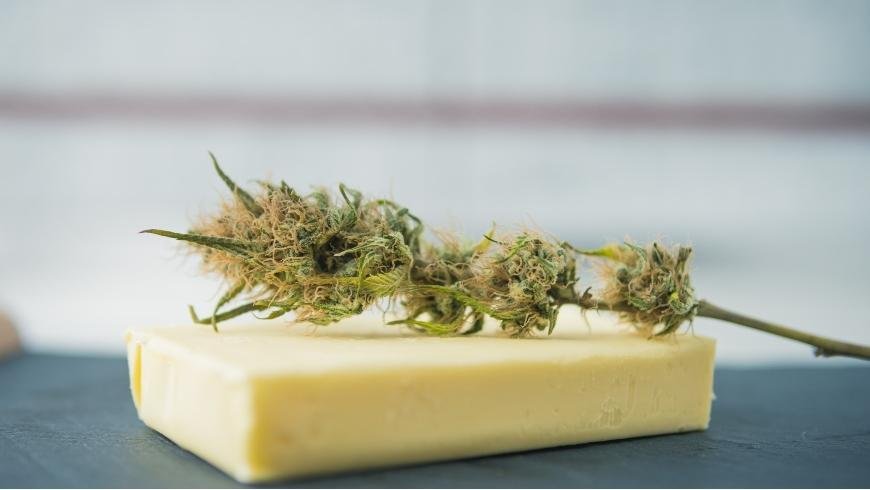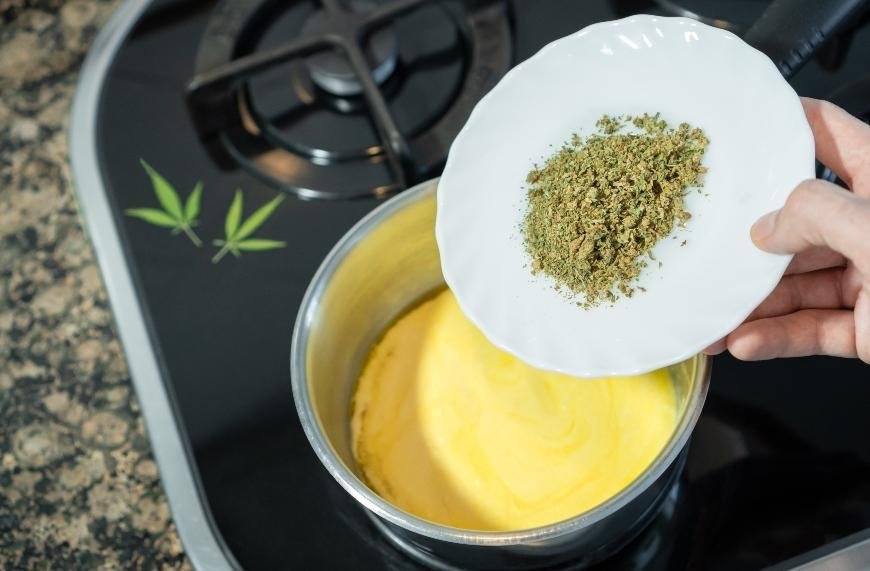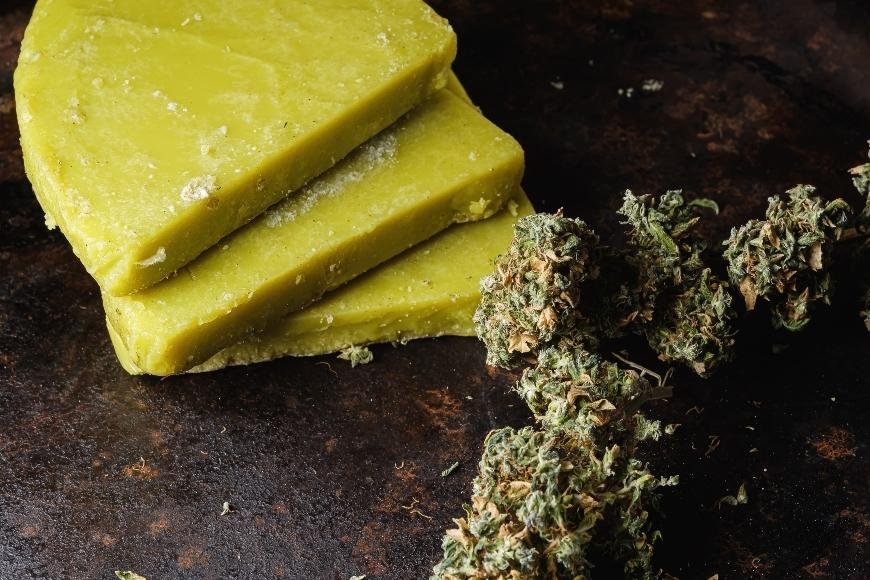How to Make Cannabutter
Learn how to make cannabutter with our beginner's guide, featuring step-by-step instructions, ingredients, storage tips, and recipe ideas.

Creating cannabutter is a must-have ability for cannabis lovers wanting to expand their culinary abilities. In this comprehensive guide, we'll cover everything you need to know about making cannabutter, from selecting the right ingredients and equipment, to mastering the step-by-step process.
Not only will we provide tips on straining and storing your homemade cannabutter, but we'll also share some of our favorite recipes that showcase its versatility in the kitchen. By learning how to make cannabutter at home, you can elevate your edible game and impress friends with delicious treats infused with just the right amount of THC or CBD.
From curious beginner to seasoned pro, this guide has something for everyone looking to explore new ways of consuming cannabis. Dive in and discover the art of making weed butter like never before!
Table of Contents:
- What is Cannabutter?
- Decarboxylation: A Crucial Step
- Quality Matters
- Ingredients Needed
- Using Cannabutter in Recipes
- FAQs in Relation to How to Make Cannabutter
- Conclusion
What is Cannabutter?
Cannabutter is a versatile and popular ingredient in the world of cannabis-infused edibles. It combines the flavors and effects of cannabis with the rich taste and texture of butter. By using cannabutter to spice up your meals, you can experience the diverse flavors and potential therapeutic benefits of cannabis without having to smoke or vape.
Whether you're looking for recreational enjoyment or seeking relief from various ailments such as chronic pain or anxiety, cannabis provides numerous therapeutic properties. And by incorporating it into your cooking through cannabutter, you'll have an easy way to consume this powerful plant without having to smoke or vape it.
The process of making cannabutter involves extracting cannabinoids like THC (tetrahydrocannabinol) and CBD (cannabidiol) from cannabis buds or trimmings using heat and fat from butter. By infusing butter with cannabis, one can create a potent mixture suitable for use in both sweet and savory recipes.
Learning how to make cannabutter at home allows you full control over its potency level based on personal preferences - something not always possible when purchasing pre-made edibles. Additionally, homemade infused treats are often more cost-effective than store-bought options.

Decarboxylation: A Crucial Step
To fully unlock the potential benefits found within cannabis flowers before creating your cannabutter masterpiece, one must first undergo decarboxylation - a crucial step in activating THC content within raw plants. This process involves heating up ground-up marijuana at specific temperatures for certain durations until THCA (the non-psychoactive form of THC) is converted into its active counterpart, THC.
Decarboxylation can be achieved by baking your cannabis in an oven or using specialized devices designed for this purpose. Skipping this step will result in a less potent final product, as the raw plant material won't contain enough activated THC to produce the desired effects.
Quality Matters
When it comes to making cannabutter, quality matters - both in terms of ingredients and equipment used during the process. To ensure optimal results, always start with high-quality cannabis buds or trimmings from reputable sources. This guarantees that you're working with clean materials free from contaminants like pesticides and mold.
For a more flavorful and nutritious cannabutter, use unsalted butter from grass-fed cows. Opting for unsalted varieties made from grass-fed cows ensures better flavor profiles while providing additional health benefits compared to conventional alternatives.
Ingredients Needed
If you want to make your own delicious and potent cannabutter, you'll need a few essential ingredients and equipment. The quality of the cannabis you use plays a significant role in determining the final outcome, so be sure to source high-quality buds or trimmings for the best results. Let's dive into what you'll need:
Cannabis Buds or Trimmings
The star ingredient in any cannabutter recipe is, of course, cannabis. You can use either dried buds or trimmings from your plants. If using buds, aim for about 7-14 grams per cup of butter; if using trimmings instead, increase that amount to around 28 grams per cup.
Butter
You'll also need unsalted butter as the base for your infusion - one pound (4 sticks) should suffice for most recipes. It's important to choose high-quality butter since it will impact both flavor and texture.
Optional Flavorings & Additives
If desired, add herbs like rosemary or thyme during the infusion process to enhance flavors further. Additionally, some people prefer adding lecithin granules (1 tablespoon per cup of butter) as an emulsifier which helps with THC absorption when consuming edibles made with cannabutter.
Equipment List:
- A medium-sized saucepan or slow cooker - these are ideal tools for maintaining low heat throughout the infusion process.
- A thermometer - this allows you to monitor temperature closely while infusing cannabis into melted butter.
- A fine mesh strainer or cheesecloth - for separating the plant material from your infused butter.
- Heat-resistant container or jar - to store your finished cannabutter.
Decarboxylation: Activating THC
Prior to making cannabutter, it's crucial to decarboxylate your cannabis. This process involves heating the buds or trimmings at a low temperature (around 240°F/115°C) for about 30-45 minutes, which converts non-psychoactive THCA into psychoactive THC. Decarboxylation ensures that you get the full potency and effects of cannabis in your butter.
Now that you have all the necessary ingredients and equipment ready, let's move on to making some delicious homemade cannabutter.
Step-by-Step Process
Making cannabutter is a simple process that requires only a few ingredients and some patience. Follow these steps to create your own cannabis-infused butter:
- Decarboxylation: Before infusing the cannabis into the butter, you need to activate its THC through decarboxylation. Spread your ground cannabis on a parchment-lined baking sheet and bake at 240°F (115°C) for 30-40 minutes, stirring occasionally until it turns light brown. Bake the cannabis for around half an hour to forty minutes, stirring occasionally until it has taken on a light brown hue.
- Melt the Butter: In a saucepan or double boiler, melt your desired amount of butter over low heat. The general rule of thumb is using one cup of butter for every ounce of cannabis.
- Add Cannabis: Once the butter has melted, add in your decarboxylated cannabis and mix well. It's essential to maintain low heat during this step as high temperatures can degrade THC potency. Maintain low heat while stirring occasionally for about two hours at a temperature of between 160°F -180°F (70°C -80°C).
- Dosage Considerations: To customize the potency of your cannabutter according to preferences and intended use, consider adjusting both cooking time and the ratio between cannabis and butter used in the infusion process. Longer cooking times may result in stronger effects but also increase the risk of degrading cannabinoids. Experiment with different ratios based on personal experience or consult a professional for guidance.
- Strain the Mixture: After simmering, remove the mixture from heat and let it cool slightly. Then, using a cheesecloth or fine mesh strainer, strain the cannabis-infused butter into an airtight container to separate out any plant material. Be sure to squeeze out as much liquid as possible without breaking the cloth.
- Cool & Store: Allow your cannabutter to cool at room temperature before refrigerating it. Once cooled, store your cannabutter in an airtight container for optimal freshness and potency. Remember that proper storage is crucial for maintaining the freshness and potency of your homemade cannabutter.
By following these steps carefully and considering dosage guidelines, you'll be able to create delicious cannabis-infused butter perfect for use in various recipes. Enjoy experimenting with different dishes while reaping the benefits of this versatile ingredient.
Straining and Storage Tips
Once you have infused your cannabis into the butter, it is essential to strain out the plant material and store your cannabutter properly. This will ensure a smooth texture and maintain its freshness and potency for future use.
To strain your cannabutter, place a cheesecloth or fine mesh strainer over a glass container or bowl. Carefully pour the melted butter mixture through the cheesecloth or strainer, allowing it to catch any remaining plant material. Be sure to let it cool slightly before handling, as hot liquid can cause burns.
If desired, you can gently press on the strained cannabis with a spoon or spatula to extract any remaining butter from the plant matter. However, avoid squeezing too hard as this may push unwanted particles through the cheesecloth or strainer.
- TIP: For an even smoother consistency in your final product, consider using a double layer of cheesecloth when straining.
After successfully separating your cannabis-infused butter from residual plant matter, allow it to cool at room temperature for about 30 minutes before transferring it into an airtight container like Tupperware or mason jars (Healthline). Proper storage is crucial in preserving both flavor and potency; refrigerate your cannabutter if planning on using within two weeks; otherwise, freeze for long-term storage (up to six months).
- TIP: Label your container with the date and potency to avoid confusion later on.
If you are looking for a dairy-free or vegan alternative, consider using plant-based butter substitutes, such as coconut oil or margarine. Cannabutter made with plant-based butter is akin to the conventional method for cannabutter; just switch out regular butter with your desired alternative and stick to the same steps mentioned above.

Using Cannabutter in Recipes
Cannabis butter, or cannabutter, is an incredibly versatile ingredient that can be used to create a wide range of delicious and potent cannabis-infused dishes. From sweet treats like brownies and cookies to savory meals such as pasta sauces and soups, the possibilities are endless when it comes to incorporating cannabutter into your culinary creations.
Once you have your homemade cannabutter, you can use it in a variety of recipes. Simply replace some or all of the regular butter called for in your favorite recipes with your cannabutter. When experimenting with recipes, bear in mind that the amount of cannabutter may need to be adjusted based on its potency and your desired effect. For a milder experience, try combining half cannabutter and half regular butter if the recipe calls for 1 cup of butter.
If you're new to making weed butter or looking for inspiration on how to use your freshly made cannabutter, here are some popular recipe ideas:
- Baked goods: Classic favorites like cookies, brownies, cakes, muffins or even pancakes can easily be infused by substituting part or all the required fat content (butter) with cannabutter.
- Sauces & spreads: Enhance pasta sauces like alfredo sauce or pesto by adding small amounts of melted cannabutter during preparation. Similarly, you can mix it into salad dressings, mayonnaise, or even your favorite nut butter for a unique and potent spread.
- Side dishes: Elevate mashed potatoes, roasted vegetables, or garlic bread by incorporating cannabutter into the cooking process. Be mindful of heat levels when using cannabutter to avoid degrading its potency.
Cooking with cannabis can be an enjoyable and rewarding experience that allows you to explore new flavors while enjoying the benefits of this versatile plant. However, it's essential to keep in mind proper dosing and always start low and go slow when experimenting with edibles. Remember that consuming too much THC can lead to unpleasant experiences, so take your time finding the right balance for your needs and preferences.
With practice, patience, and creativity, you'll soon discover just how many delicious ways there are to make cannabutter and incorporate it into your culinary repertoire.
FAQs in Relation to How to Make Cannabutter
How long does it take to make cannabutter?
It typically takes around 2-4 hours to make cannabutter, depending on the method used. The process involves decarboxylating cannabis, infusing butter with cannabinoids, and straining out plant material. For best results, maintain a low heat during infusion to preserve potency.
How much butter should I use to make cannabutter?
The amount of butter depends on your desired potency and recipe requirements. A common ratio is 1 ounce (28 grams) of cannabis per 1 pound (454 grams) or four sticks of unsalted butter. Adjust this ratio based on personal preference and tolerance levels.
How can I make my cannabutter more potent?
To maximize potency in your cannabutter, start by using high-quality cannabis with a higher THC content. Decarboxylate the cannabis properly before infusion for optimal cannabinoid activation. Additionally, consider increasing the amount of cannabis used or extending the infusion time at low heat.
How much cannabutter do I need to get high?
The amount of cannabutter needed varies based on individual tolerance levels and the potency of your cannabutter. Start with half a teaspoon as an initial dose if you're new to edibles or have a lower tolerance level; experienced users may require more than one teaspoon for desired effects.
Conclusion
Now that you know how to make cannabutter, you can easily infuse it into your favorite recipes and enjoy the benefits of cannabis in a delicious way. Remember to use high-quality ingredients and follow the step-by-step process carefully for the best results.
Straining and storing your cannabutter properly is also crucial to maintaining its potency. Creating your own cannabutter can be a fun and rewarding experience, whether it's for medicinal or recreational use.






































































































































